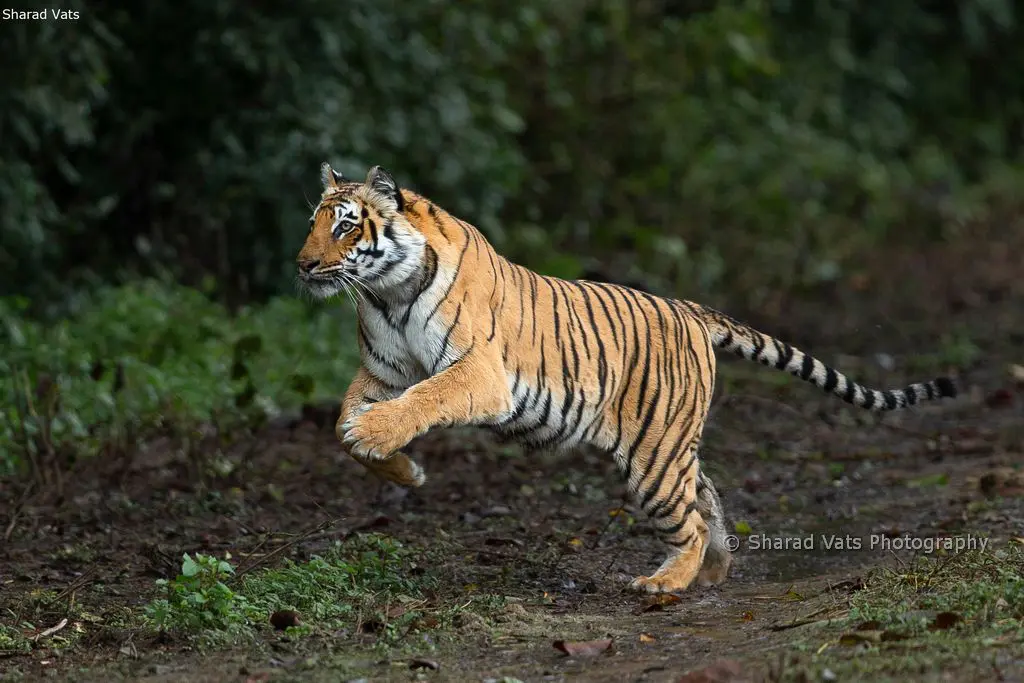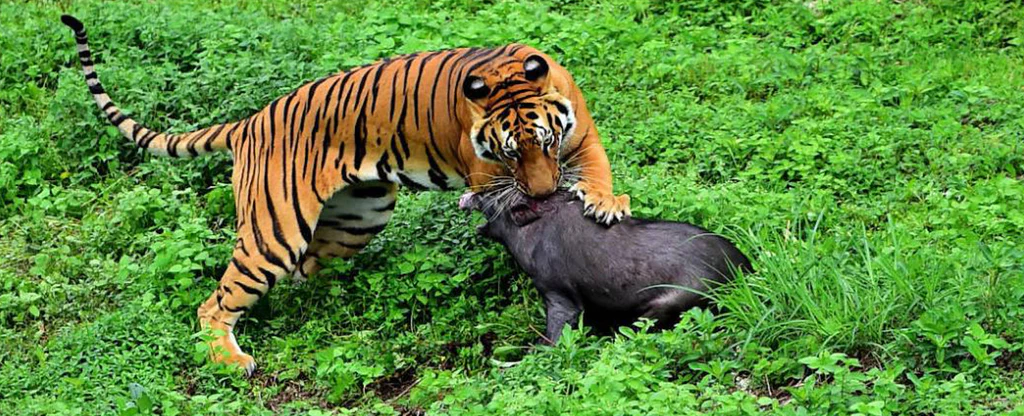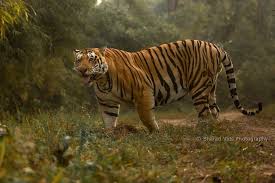Habitat
Bengal tiger, (subspecies Panthera tigris tigris), subspecies of tiger (Panthera tigris) Inhabiting the hot and humid forest, and wetlands of India, Bangladesh, Bhutan, and Nepal. The Bengal tigers appearance is distinguished from other tiger subspecies by its orange coat accented by prominent brownish-to-black stripes; a rare white-coated variant of the subspecies (the white tiger) also exists. The Bengal tiger rivals the larger, thicker-furred, cold-climate Siberian Tiger in size, and most experts consider the Bengal tiger to be the world’s second largest tiger. While some 2,000 to2,500 remain in the wild, several thousand more are thought to reside in zoos and private reserves around the world.

Food

Bengal tigers eat a variety of food their diet consist of larger mammels like deer, wild boar, cattle and goats. Due to the size and power of the bengal tiger, it has no natural predators on it's native enviornment. Bengal tigers primarly hunt deer, but as opportunistic predators, they can also eat wild boars, birds, fish, amphibians, reptiles, and even insects. A bengal tigers biggest enemy isn't yet any other animal in it's habitat it is humans as some humans poach for rare tigers that might or won't go extinct.
Fun Facts
Bengal tigers have unique stripes as they a bengal tiger. Bengal tigers can use their ears to communicate as tigers have been around for more than 2 million years half of the population of bengal tigers are in India and only need one meal a week. These tigers have no bigger animals that they can't defeat as they are the largest amongst all other wild cats. Bengal tigers can also do something intresting which is they can hunt in water and swim really far. These wild tigers can leap 30 feet in the air,climb trees and even swim. Bengal tigers have a life span of 13-14 years in natural conditions while in captivity they can live up to 20 years.
